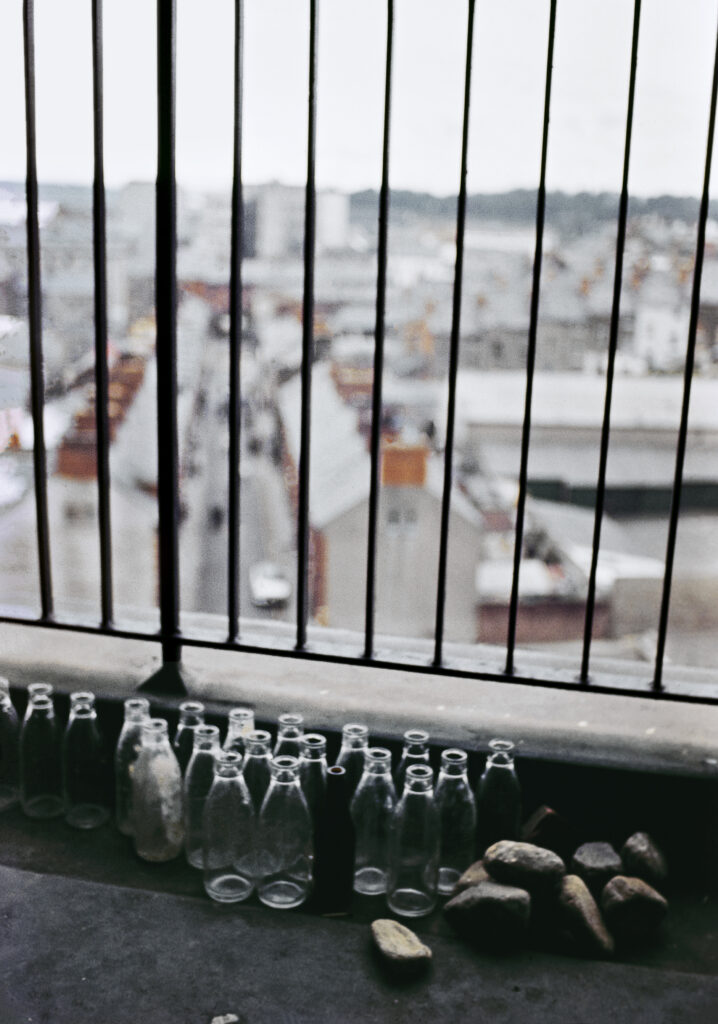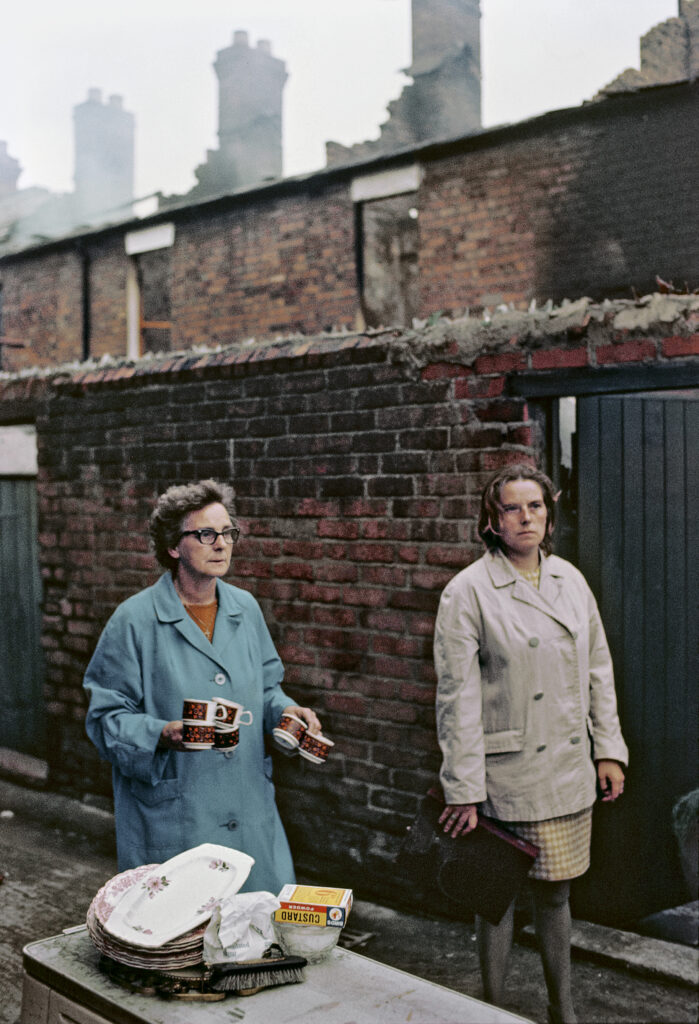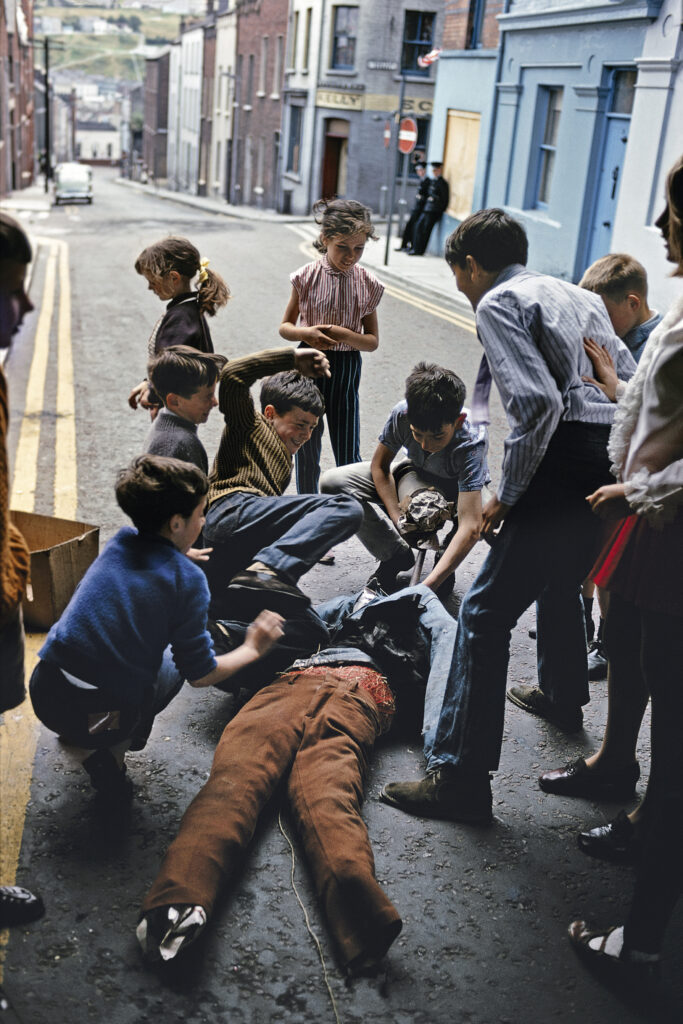Ulster Museum, Gallery 4
By Donal Fallon

The renaming of Temple Bar’s Gallery of Photography as Photo Museum Ireland in 2022 was a statement of intent. The name adopted reflected its role as Ireland’s national centre for contemporary photography, but it was also a decision looking towards the future and the ultimate aspiration of a national museum championing and preserving the medium of photography. The opening of the International Centre for the Image in the docklands more recently has brought more attention to contemporary photography. Increasingly, photography is also present in the annual show of the Royal Hibernian Academy and the annual Portrait Prize of the National Gallery of Ireland.
While based in Dublin, Photo Museum Ireland remains firmly committed to engaging with the public nationwide and internationally. Their online Photo Album of the Irish is an innovative crowd-sourced archive, touching on everything from the photography of Helen Hooker O’Malley to the importance of identity in the diaspora. Another commitment to engagement is touring exhibitions, which has brought The Memories of Others to Belfast. The work of Japanese photographer Akihiko Okamura, these images capture Northern Ireland at the outset of the Troubles, showing extraordinary contrasts of everyday life and the worsening political atmosphere. In one image milk bottles sit on a doorstep. In another we see empty milk bottles alongside rocks at the Rossville Flats in the Bogside of 1969.

The Ulster Museum is no stranger to hosting photographic exhibitions focused on the Troubles, including Bill Rolston’s recent exploration of murals (reviewed here in HI 33.2, March/April 2025). Okamura’s work is particularly interesting, as it comes from a different place entirely. While Rolston had a keen sense of the political climate in which things were unfolding, Okamura was an outsider who had first taken an interest in Ireland through a desire to explore the ancestry of President John F. Kennedy. If Kennedy represented a romantic or starry-eyed idea of Ireland and its people, one shouldn’t presume that Okamura was someone unfamiliar with conflict before coming here. He had previously covered the Vietnam War, with a feature in Life leading to a ban on entering South Vietnam. Readers of Time magazine were told in 1965 that
‘Akihiko Okamura is a courageous, persistent Japanese photographer who set out last April to see what the war in Viet Nam is like from the Communist side. Armed with six cameras, 182 rolls of film and a Vietnamese dictionary, Okamura, 36, simply boarded a northbound bus out of Saigon and sat tight.’
When he later arrived in Ireland in 1968, he noted of Dublin: ‘Stormy weather. The sky was dark, almost black. A swirling wind whipped the freezing rain against my cheeks.’
Like journalists, photographers flocked to the North in the late 1960s and early ’70s, though much historical focus has been more local. RTÉ’s 2021 documentary Shooting the Darkness spotlighted local press photographers like Stanley Matchett, who captured the unforgettable image of Father (later Bishop) Daly carrying a blood-stained handkerchief as the body of young Jack Duddy is carried away on Bloody Sunday. Of the international photographers to capture the early years of the crisis, the work of Gilles Peress has received much attention, with the Frenchman recalling in a recent interview that ‘I remember shooting and crying at the same time’. Like Matchett, Peress was present in the Bogside on Bloody Sunday.

While the names of these photographers recall such moments, Okamura’s work captures a social history of the impact of the conflict on everyday life. In one image women gather their belongings in a red-brick Belfast laneway. On reading the caption, we look closer to see burned-out Bombay Street in August 1969. In Feargal Cochrane’s recent history of Belfast city, the chaos of that moment is well captured, a Bombay Street resident recalling the cries of ‘Burn them out!’ There is an almost bizarre juxtaposition of the horror of burnt-out homes and something as everyday as a mug of tea.
There is little doubt where Okamura’s political sympathies lay in the North, and occasionally the focus moves elsewhere; we see a family of fleeing refugees in a Dublin train station. Still, there is an often-sympathetic look at working-class loyalist communities, with a review of the exhibition on online left-wing cultural magazine Rundale describing ‘joyful images of working-class leisure that seem a world away from sectarian hatred’. For me they recall the photography of Martin Parr, capturing fairs and recreation. In one picture we see a young member of a loyalist band enjoying a bottle of fizzy pop before a parade, while another shows happy children preparing an effigy of Lt. Col. Robert Lundy in Derry. The burning of an effigy of Lundy, regarded as a traitor during the Siege of Derry, is a tradition that has passed down through generations in the city in connection with the annual Apprentice Boys Parade in August. The children are happy and could be partaking in a street festival anywhere.
The short documentary that accompanies this exhibition, directed by Pauline Vermare and Marc Lesser, is scored beautifully with music composed by Sam Perkin and Crash Ensemble, along with interviews with Seán O’Hagan and others who worked on the exhibition. The word ‘enigma’ is used to describe the photographer, but, whatever remains mysterious about him as an individual, it is clear that his work in Ireland was motivated by a strong affinity for and empathy with working-class people who found themselves at the cutting edge of conflict. As powerful as these images were on the walls of Temple Bar’s Photo Museum Ireland, they carry more weight in a city that is at the heart of the story they tell.
Donal Fallon is a historian and the presenter of the ‘Three Castles Burning’ podcast.
